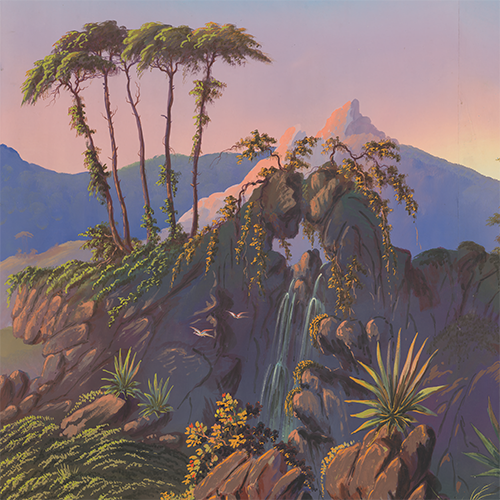From Wallpaper to Moving Panorama
The Discovery of Fragments of the Cyclorama Reichardt
DOI:
https://doi.org/10.52476/trb.12234Abstract
During the preparations for the Rijksmuseum depot’s move to its new location, Collectie Centrum Nederland (CCNL) in 2018, a hand-painted scenic landscape on paper that is 2,309 centimetres long and 180 centimetres high came to light. Together with five broadly similar, but shorter pieces, the group of objects was briefly described on a museum inventory card in 1962 as six rolls of wallpaper. After extensive research and conservation, it now appears that four of these are in fact fragments of a moving panorama. More specifically, they have been identified as surviving parts of what was known as the Reuzen-Cyclorama (Giant Cyclorama) or Cyclorama Reichardt, named after its German owner, Ferdinand Reichardt (b. 1813). This particular moving panorama, originally measuring an astounding one and a half kilometres, was an extraordinary phenomenon that is documented as having travelled through the Netherlands, Belgium and Great Britain between 1853 and 1855. It was shown to the public, rolled between two wooden poles and accompanied by music or storytelling, in order to give people an experience of travelling the regions of Tyrol, Switzerland and Italy. The article will follow the interdisciplinary quest undertaken by curators and conservators that led to the compelling new understanding of the purpose of these long-forgotten lengthy paper landscapes in the Rijksmuseum’s collection.
Downloads







